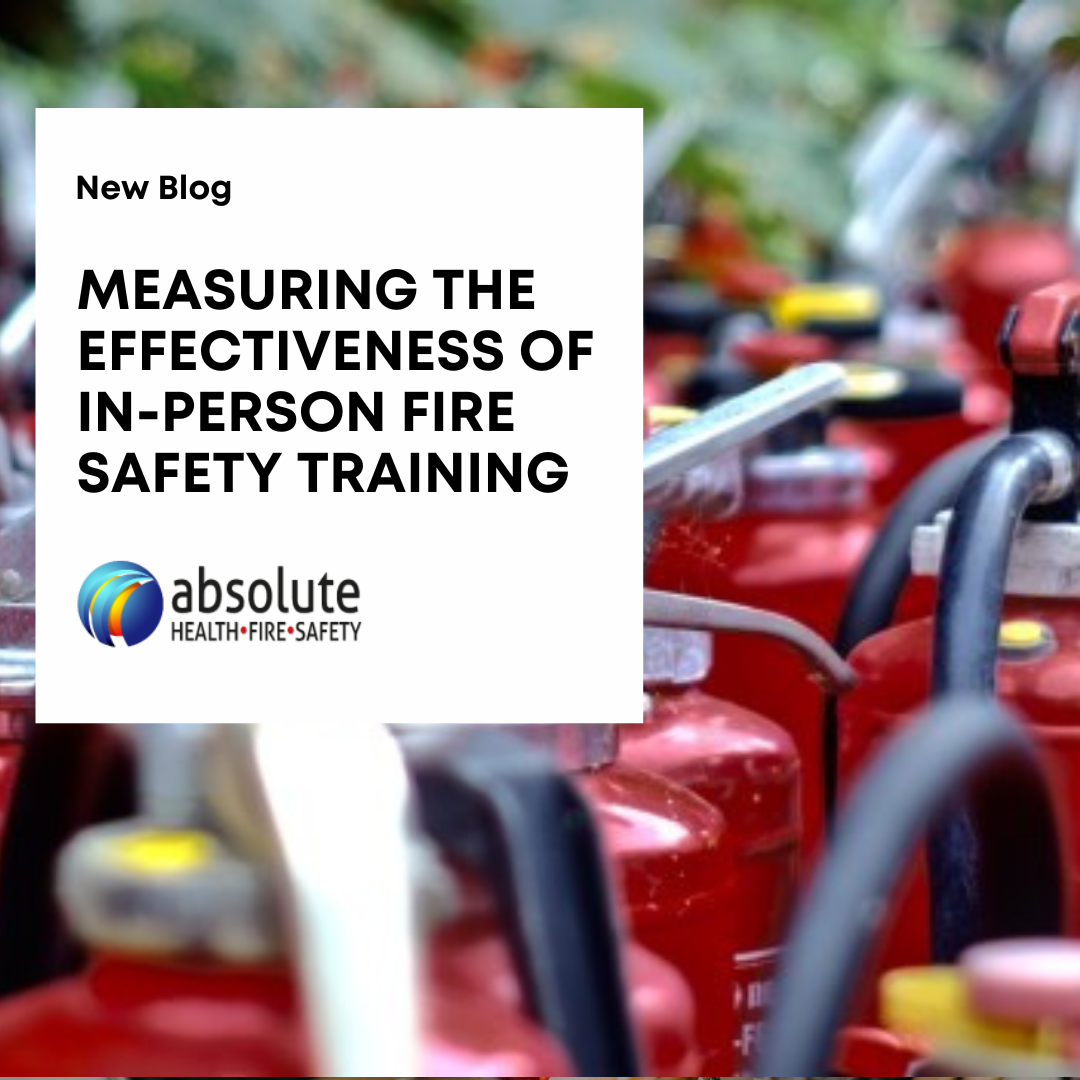Fire safety and protection is paramount for the safety of your occupants or tenants, as well as the structure and longevity of your building. An integral part of your overall fire safety plan is fire safety.
There are many potential ways to undertake fire safety training, for example in person with Absolute Health Fire Safety, or online through e-learning videos. The effectiveness of such training should be measured, particularly with a topic with such significance to human life.
In this blog, we will magnify the importance of measuring the effectiveness of in-person fire safety training which is what we specialise in at Absolute Health Fire Safety.
This blog will cover the following segments:
- The human element
- Key metrics for measuring
- Methods of evaluating
- & so much more
If by the end of the blog, you would like to speak to our team directly about fire safety training, then we’d be delighted to discuss. Just call us directly on 0113 418 2911 or use our online contact form.

The Human Element
One of the main reasons in-person fire safety training is favourable in our opinion is due to the human element. While virtual classes or sessions can provide theoretical knowledge, the ability to physically interact with fire safety equipment, practice evacuation procedures, and receive immediate feedback from instructors is more complex than being in person. All these things create a more immersive and memorable learning experience which for some, can mean the learnings are embedded in their brains better. You can find out more about our dedicated in-person fire safety training here.
Key Metrics For Measuring In-Person Fire Safety Training
In person fire safety training has a number of key metrics that can be used to measure the effectiveness of it:
Knowledge Retention
The whole point of training of any kind is to impart knowledge so being able to ascertain how much of it you’ve gained is important. When you’re in-person undertaking the training, your assessor can check-in with you before, during and after the sessions to ensure everything is going well. A significant improvement in feedback indicates successful knowledge transfer.
Emergency Response Time
In a fire emergency, every second counts. Evaluating participants’ response times during practice fire drills provides valuable insights into the practical application of the training received. Monitoring the speed and efficiency with which employees can evacuate a building, use fire extinguishers, and follow designated escape routes helps assess the real-world effectiveness of the training. Seconds save lives, literally.
Team Coordination
Another notable advantage of being in-person with a group is you can do group training exercises to encourage team bonding and communication. In the state of an emergency, you don’t have time to think twice, you need to make split-second decisions as a team. Assessing how well teams communicate, assign roles, and execute evacuation plans provides a qualitative measure of the training’s impact on team dynamics and crisis management.
Confidence Levels
Confidence is key when it comes to dealing positively with fire drills or safety. Being confident in what you’re doing and how you do it could potentially save someone’s life. In person training can give a clear indication of someone’s confidence levels to our assessors. And of course, we’ll be on hand to answer any outstanding questions.
Methods of Evaluating
You may be wondering how you can go about evaluating the effectiveness of in-person fire safety training with various methods. Here are a few examples of how you can do that fire safety training:
Surveys and Feedback
An easy way to get good feedback is by utilising surveys and feedback forms from participants of your in-person fire safety training. The answers you receive, if asked correctly, can provide the honesty you need to not only gauge where each person is at in their fire safety abilities but it means you can adjust the programme to support them.
Observational Assessments
Professional fire safety trainers will be able to closely monitor participants’ progress when doing drills and exercises which will yield an understanding of how well people are doing. A good trainer will see strong development in terms of knowledge and practical situations. It’s far easier to do this in person which puts in-person training above online training, for us, in terms of effectiveness.
Incident Analysis
In the unfortunate event of a real fire incident, a thorough analysis of the response and actions taken by employees can provide valuable insights into the effectiveness of the training. Examining how well individuals and teams apply their training in an actual emergency helps identify strengths and weaknesses in the overall fire safety preparedness of the organisation. This can only be done well, in person.

Contact Us Today
It’s simple to get a FREE quote from our team for fire safety training. All you need to do is get in touch with us so we can ask you a few questions to gain an understanding of what you need exactly.
We have experience across all sectors and industries so we shouldn’t have a problem providing a quote for anyone. Our in person fire safety training courses are very thorough and will improve your knowledge amazingly.
To book in, please either call us on 0113 418 2911, or complete the contact form.

